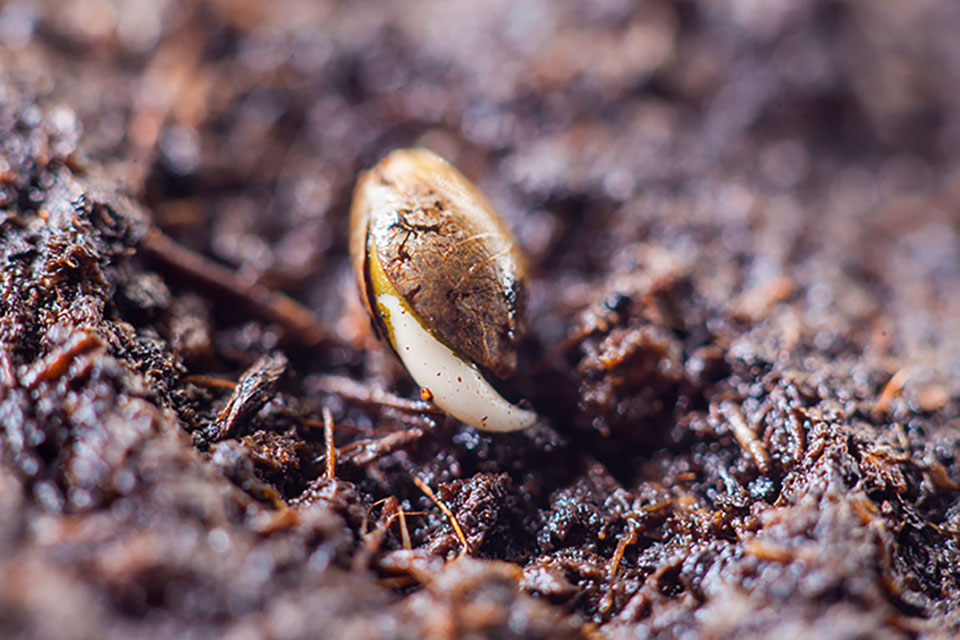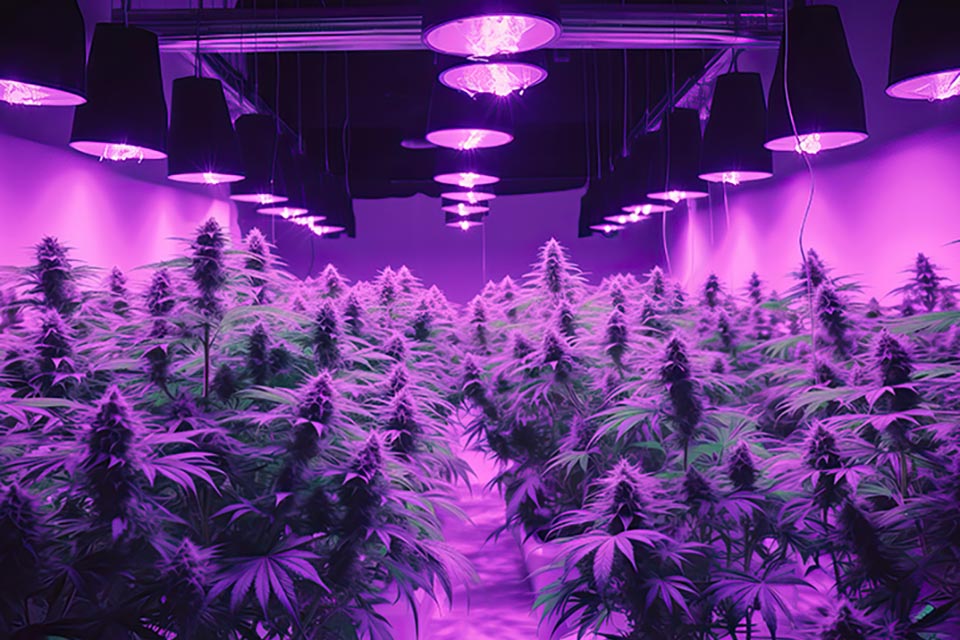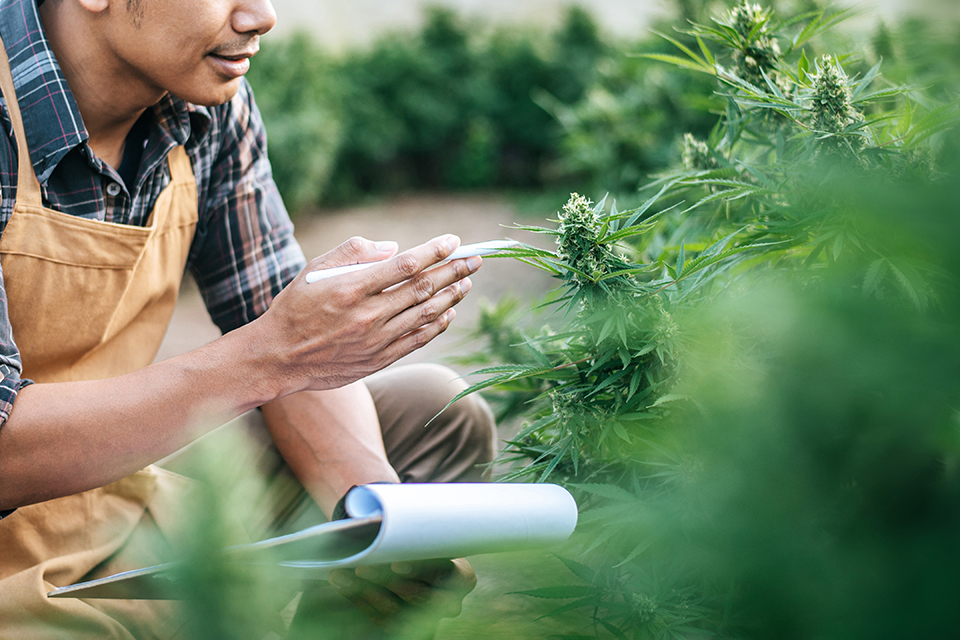
When most people think of calcium, they think of bones. Boneless as they may be, plants need calcium just like people and going without it can have devastating consequences. Learn about the importance of calcium for cannabis growth, how to identify symptoms of deficiency and the best methods for correcting and preventing this issue in the future in this guide by Kind Seed Co.
What Does Calcium Do for Cannabis Plants?
Calcium plays a big role in plant growth and development. For cannabis plants, calcium is essential for cellular growth and structure. It helps in the formation of cell walls, thereby strengthening the plant’s structure and increasing its resistance to diseases. Additionally, calcium aids in nutrient uptake by assisting in the activation of certain enzymes and indirectly maintaining the balance of other nutrients in the plant.
Calcium also influences water movement within the plant, assisting it in coping with stress from environmental factors such as drought or high temperatures. A strong supply of calcium can help cannabis plants resist wilting and other damage that can impact their growth and yield.
Diagnosing Calcium Deficiency
The first step in understanding how to fix calcium deficiency in cannabis plants is to accurately diagnose the issue. The two most effective diagnostic methods include visual inspection for symptoms and conducting soil tests to measure calcium levels.
Visual Symptoms and Leaf Analysis
Calcium deficiency in cannabis plants often manifests visibly, particularly on the leaves. In the earliest stages, the plant leaves might show signs of marginal yellowing, initially appearing at the leaf tips and progressing inward. As the deficiency worsens, you may notice the leaves curling upward and developing a crinkled or distorted appearance.
Severe calcium deficiency leads to the formation of necrotic or dead spots on the leaves. This is because calcium is a crucial part of the plant cell walls and a lack of calcium weakens the plant’s overall structure. Long-term calcium deficiency can devastate your plants and lead them to die off.
Soil Testing for Calcium Levels
It should be noted that the symptoms outlined before can certainly indicate calcium deficiency, but they might also be signs of other nutrient imbalances. To confirm that the symptoms you’re seeing are indeed due to calcium deficiency, you should perform a soil test. You can purchase soil testing kits online or from your local garden store. These kits work by collecting a small soil sample from your cannabis garden, adding a provided reagent and comparing the color change with a chart to measure the level of calcium. Depending on the color, you can determine how severe the deficiency is or even determine that the calcium content is sufficient and another problem is present.
Correcting Calcium Deficiency
You have several options for how to fix the calcium deficiency in your cannabis plants. These include:
Choosing the Right Calcium Supplements
Calcium supplements are the key elements in resolving calcium deficiency in cannabis plants and understanding the differences between organic and synthetic options, as well as the appropriate application methods, can make all the difference.
- Organic vs. Synthetic Options: Organic calcium supplements often come from natural sources like crushed eggshells, limestone, or oyster shells. They are beneficial for long-term maintenance of calcium levels in soil. Synthetic calcium supplements, typically calcium nitrate or calcium chloride, offer a more immediate fix.
- Application Methods: Applying calcium supplements is typically done by mixing the supplement into the watering solution or applying directly to the soil. In severe cases, foliar application may be used as a quick fix, where the calcium supplement is sprayed directly onto the leaves.
Adjusting Soil pH for Improved Calcium Uptake
In order to fix calcium deficiency in cannabis plants, you’ll need to understand calcium uptake. Different factors affect how easily your plants can use calcium in the soil, pH being a big one. Maintaining the soil pH between 6.2 and 7.0 is optimal for cannabis plants to absorb calcium. Adjusting the pH can be done by adding limestone to increase pH or sulfur to lower it.
Preventing Calcium Deficiency in Cannabis Plants
Prevention is often the best cure, so it’s important to find ways to prevent calcium deficiency in your cannabis going forward. There are certain things you can do for your plants to keep them healthy, some of which include:
Best Practices for Calcium Maintenance
Keep the soil well-watered but not soggy, as excessive water can lead to calcium leaching. Regularly add compost or well-rotted manure to the soil to maintain organic matter and nutrient levels.
Nutrient Balancing and Feeding Schedules
Balance your cannabis plant’s nutrient intake, ensuring it includes an adequate amount of calcium. Maintain a regular feeding schedule to avoid nutrient lockout.
Keep Your Cannabis Healthy Today
Deficiencies should not be daunting. Correcting and preventing calcium deficiency in cannabis plants is achievable through thoughtful and proactive care. As long as you keep the methods of identification, treatment and prevention we outlined here in mind, you should have no trouble growing a healthy and bountiful cannabis harvest.



